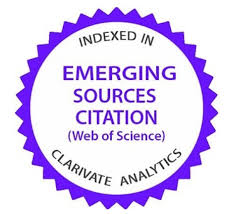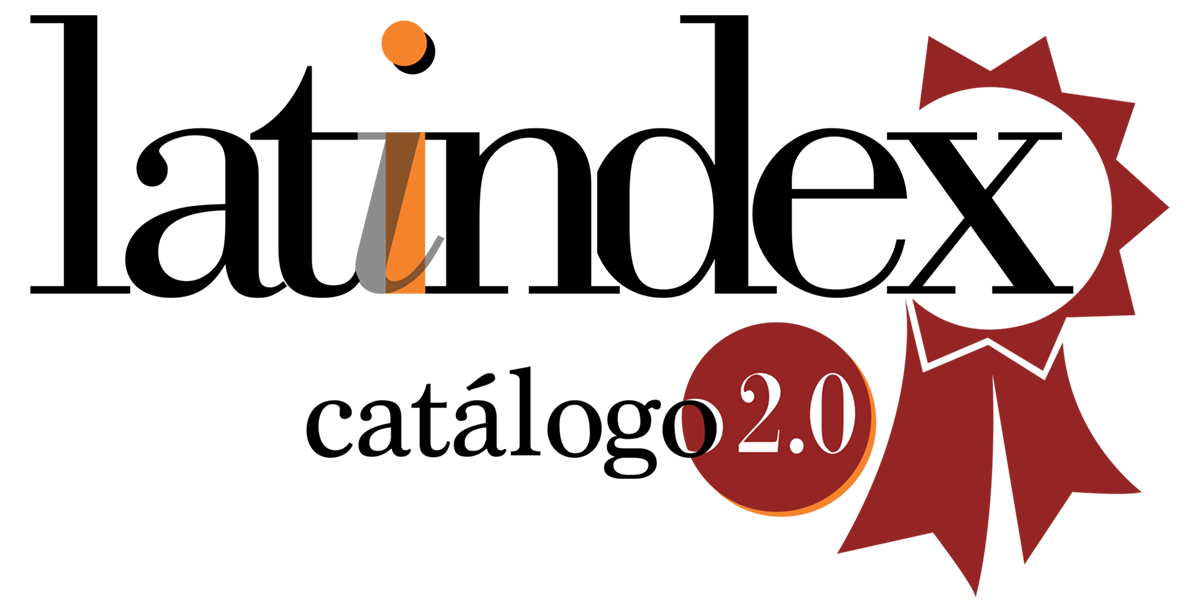Realist theory of adjudication to the test of cognitive science
DOI:
https://doi.org/10.35295/osls.iisl.2305Parole chiave:
dual process theories, bias and heuristics, judicial decision-making, Jerome Frank, Alf Ross, law and mindAbstract
Being characterised by the centrality of legislation, one may say that Western legal theories have been grounded on a sort of Kahneman’s System 2 rational thinking. In his researches on the nature of thought, choice and decision, Kahneman has outlined how two different mental processes (heuristics-fact System 1; deliberate-slow System 2) interact within reasoning and decision-making (Kahneman 2011). Over the past decades, a number of inquiries on normative practical reasoning has grown widely. For instance, in the field of moral psychology, it has gone from views of morality based on abstract rules to perspectives emphasising the coexistence of additional factors in moral deliberation (Haidt 2001; Greene 2004). Brought to the legal domain, such inquiries have shown that the judicial-decision process is more alive to the influence of heuristics and cognitive social biases, then generally admitted. Indeed, since the early decades of 20th century, realist legal scholars such as Jerome Frank (1949a, 1949b) and Alf Ross (1946, 1959) explored the psychological grounds of judicial decision-making. Reassessed with new sensitivity, their insights prove that a realist view is the most viable alternative in both theories of legal sources and judicial adjudication, by keeping pace with the latest advancements afforded by cognitive science.
Downloads
Metrics
Statistiche globali ℹ️
|
191
Visualizzazioni
|
93
Download
|
|
284
Totale
|
|
Riferimenti bibliografici
Aristotle, 1999. Nicomachean Ethics. Trans.: W.D. Ross. Kitchener: Batoche Books. DOI: https://doi.org/10.1093/oseo/instance.00258595
Blair, V.I., Judd, C.M., and Chapleau, K.M., 2004.The influence of Afrocentric facial features in criminal sentencing. Psychological Science [online], 15(10), 674-679. Available at: https://doi.org/10.1111/j.0956-7976.2004.00739.x DOI: https://doi.org/10.1111/j.0956-7976.2004.00739.x
Chaiken, S., and Trope, Y., eds., 1999. Dual-Process Theories in Social Psychology. New York/London: The Guilford Press.
Chiassoni, P., 2021. The law and cognitive sciences enterprise: a few analytic notes. In: B. Brozek, J. Haage and N.A. Vincent, eds., Law and mind. A survey of law and cognitive science [online]. Cambridge University Press, 490-506. Available at: https://doi.org/10.1017/9781108623056.023 DOI: https://doi.org/10.1017/9781108623056.023
Cohen, F.S., 1935. Transcendental nonsense and the functional approach. Colombia Law Review [online], 35(6), 809-849. Available at: https://doi.org/10.2307/1116300 DOI: https://doi.org/10.2307/1116300
Damasio, A., 1996. The somatic marker hypothesis and the possible functions of the prefrontal cortex. Philosophical Transactions: Biological Sciences [online], 351(1346), 1413-1420. Available at: https://doi.org/10.1098/rstb.1996.0125 DOI: https://doi.org/10.1098/rstb.1996.0125
Damasio, A., 2006. Descartes’ error. London: Vintage.
Dror, I.E., and Rosenthal, R., 2008. Meta-analytically quantifying the reliability and bias ability of forensic experts. Journal of Forensic Science [online], 53, 900-903. Available at: https://doi.org/10.1111/j.1556-4029.2008.00762.x DOI: https://doi.org/10.1111/j.1556-4029.2008.00762.x
Dworkin, R., 1986. Law’s Empire. Oxford/Portland: Hart.
Epstein, L., and Knight, J., 2013. Reconsidering judicial preferences. Annual Review of Political Science [online], 16(1), 11-31. Available at: https://doi.org/10.1146/annurev-polisci-032211-214229 DOI: https://doi.org/10.1146/annurev-polisci-032211-214229
Foot, P., 1967. The problem of abortion and the doctrine of the double effect. The Oxford Review, 5, 5-15.
Frank, J., 1949a. Courts on trial. Myth and reality in American justice. Princeton University Press.
Frank, J., 1949b. Law and the modern mind. London: Stevens&Sons Limited (Originally published in 1931).
Freud, S., 1963. General psychological theory. New York: Macmillan.
Gawronski, B., and Creighton, L.A., 2013. Dual Process Theories. In: D.E. Carlston, ed., The Oxford handbook of social cognition [online]. New York: Oxford University Press, 282-312. Available at: https://doi.org/10.1093/oxfordhb/9780199730018.013.0014 DOI: https://doi.org/10.1093/oxfordhb/9780199730018.013.0014
Gigerenzer, G., 2007. Gut feelings. The intelligence of the unconscious [online]. New York: Penguin. Available at: Available at: https://hadinur.net/wp-content/uploads/2018/05/gerd-gigerenzer-gut-feelings_-the-intelligence-of-the-unconscious-penguin-non-classics-2008.pdf
Greene, J.D., 2011. Social neuroscience and the soul’s last stand. In: A. Todorov, S. Fiske and D. Prentice, eds., Social neuroscience: Toward understanding the underpinnings of the social mind [online]. New York: Oxford University Press, 263-273. Available at: https://doi.org/10.1093/acprof:oso/9780195316872.003.0018 DOI: https://doi.org/10.1093/acprof:oso/9780195316872.003.0018
Greene, J.D., 2014. Beyond point and shoot morality: why cognitive (neuro)science matters for ethics. Chicago Journal [online], 124(4), 697-698. Available at: https://doi.org/10.1086/675875 DOI: https://doi.org/10.1086/675875
Greene, J.D., and Young, L., 2009. The cognitive neuroscience of moral judgments and decision making. In: M.S. Gazzaniga and G.R. Mangun, eds., The cognitive neurosciences. Cambridge, MA: The MIT Press, 1005-1015.
Guthrie, C., Rachlinski, J.J., and Wistrich, A.J., 2001. Inside the judicial mind. Cornell Law Library [online], 5, 777-830. Available at: https://doi.org/10.2139/ssrn.257634 DOI: https://doi.org/10.2139/ssrn.257634
Hage, J., 2021. Are the cognitive sciences relevant for law? In: B. Brozek, J. Haage and N.A. Vincent, eds., Law and mind. A survey of law and cognitive science [online]. Cambridge University Press, 17-49. Available at: https://doi.org/10.1017/9781108623056.002 DOI: https://doi.org/10.1017/9781108623056.002
Haidt, J., 2001. The emotional dog and its rational tail: A social intuitionist approach to moral judgment. Psychological Review, 108, 814-834. Available at: https://doi.org/10.1037//0033-295X.108.4.814 DOI: https://doi.org/10.1037//0033-295X.108.4.814
Haidt, J., 2012. The righteous mind. Why good people are divided by politics and religion. London: Penguin Group.
Hoffman, M.B., 2021.The psychology of the trial judge. In: B. Brozek, J. Haage and N.A. Vincent, eds., Law and mind. A survey of law and cognitive science [online]. Cambridge University Press, 165-192. Available at: https://doi.org/10.1017/9781108623056.008 DOI: https://doi.org/10.1017/9781108623056.008
Holmes, O.W., 1881. The Common Law. Boston: Little Brown and company.
Holmes, O.W., 1897. The path of law. Harvard Law Review [online], 10(8), 457-478. Available at: https://doi.org/10.2307/1322028 DOI: https://doi.org/10.2307/1322028
Hume, D. (with L.A. Selby-Bygge, ed.), 1896. A Treatise of human nature. Oxford: Clarendon Press.
Hutcheson, J.C., 1929. Judgment intuitive: the function of the hunch in judicial decision. Cornell Law Review [online], 14(3), 274-288. Available at: https://scholarship.law.cornell.edu/clr/vol14/iss3/2/
Kahneman, D., 2011. Thinking fast and slow. New York: Farrar, Straus and Giroux.
Kahneman, D., and Tversky, A., 1979. Prospect theory: an analysis of decision under risk. Econometrica [online], 47(2), 263-291. Available at: https://doi.org/10.2307/1914185 DOI: https://doi.org/10.2307/1914185
Kahneman, D., Sibiny, O., and Sunstein, C.R., 2021. Noise. A flow in human judgment. New York/Boston/London: Little, Brown Spark.
Kang, J., 2005. Trojan horses of race. Harvard Law Review, 118(5), 1489-1593.
Kang, J., and Banaji, R.M., 2006. Fair measures: a behavioural realist revision of “affirmative action”. California Law Review [online], 94, 1063-1118. Available at: https://doi.org/10.2307/20439059 DOI: https://doi.org/10.2307/20439059
Kant, I., 2000. Critique of the Power of Judgment [online]. Cambridge University Press. Available at: https://doi.org/10.1017/CBO9780511804656 DOI: https://doi.org/10.1017/CBO9780511804656
Kelsen, H., 1934. Reine Rechtslehere. Leipzig: Franz Deuticke.
Kelsen, H., 1960. Reine Rechtslehere. 2nd ed. Vienna: Franz Deuticke.
Keren, G., and Wu, G., 2005. A bird’s eye view of the history of judgment and decision-making. In: G. Keren and G. Wu, eds., The Wiley Blackwell Handbook of judgment and decision-making [online]. Chichester: John Wiley & Sons, 1-40. Available at: https://doi.org/10.1002/9781118468333.ch1 DOI: https://doi.org/10.1002/9781118468333.ch1
Kohlberg, L., 1976. Moral stages and moralization: The cognitive development approach. In: T. Lickona, ed., Moral development and behaviour: Theory, research and social issue. New York: Holt Rinehart and Winston, 31-53.
Kohlberg, L., and Kramer., R., 1969. Continuities and discontinuities in childhood and adult moral development. Human Development [online], 12(93), 93–120. Available at: https://doi.org/10.1159/000270857 DOI: https://doi.org/10.1159/000270857
Landsman, R., and Rakos, F., 1994. A preliminary inquiry into the effect of potentially biasing information on judges and jurors in civil litigation. Behavioural Sciences and Law [online], 12, 113-126. Available at: https://doi.org/10.1002/bsl.2370120203 DOI: https://doi.org/10.1002/bsl.2370120203
Levinson, J.D., 2007. Forgotten racial equality: implicit bias, decisionmaking, and misremembering. Duke Law Journal [online], 57(2), 345-423. Available at: https://scholarship.law.duke.edu/dlj/vol57/iss2/2/
Llewellyn, K., 1951.The bramble bush: law and its study, New York: Ocean.
Llewellyn, K., 1960. The common law tradition: deciding appeals. Boston: Little Brown & Co.
MacCoun, R.J., 1989. Experimental research on jury decision-making. Science [online], 244(4908), 1046-1050. Available at: https://doi.org/10.1126/science.244.4908.1046 DOI: https://doi.org/10.1126/science.244.4908.1046
Maveety, N., ed., 2003. The pioneers of judicial behaviour [online]. Ann Arbor: University of Michigan Press. Available at: https://doi.org/10.3998/mpub.11980 DOI: https://doi.org/10.3998/mpub.11980
Peer, E., and Gamliel, E., 2013. Heuristics and Biases in Judicial Decisions. Court review: The Journal of the American Judges Association [online], 49(2), 114-118. Available at: https://digitalcommons.unl.edu/ajacourtreview/422
Plato, 1993. Republic. Trans.: R. Waterfield. Oxford University Press.
Posner, R., 2008. How judges think. Cambridge, MA: Harvard University Press.
Pound, R.,1908. Mechanical Jurisprudence. Columbia Law Review [online], 8(8), 605-623. Available at: https://doi.org/10.2307/1108954 DOI: https://doi.org/10.2307/1108954
Rachlinksi, J., and Wistrich, A.J., 2017. Judging the judiciary by the numbers: empirical research on judges. Annual Review of law and social studies [online], 13, 203-229. Available at: https://doi.org/10.1146/annurev-lawsocsci-110615-085032 DOI: https://doi.org/10.1146/annurev-lawsocsci-110615-085032
Radin, M. 1925. The theory of judicial decision. American Bar Association Journal [online], 11(6), 357-362. Available at: https://pdfcoffee.com/theory-of-judicial-decision-or-how-judges-think-pdf-free.html
Ross, A., 1933. Kritik der Sogenannten praktischen Erkenntnis. Zugleich Prolegomena zu einer Kritik der Rechtswissenschaft. Copenhagen/Lepizig: Levin & Munksgaard-Felix Meiner.
Ross, A., 1946. Towards a realistic jurisprudence. A criticism of the dualism in law. Copenhagen: Munksgaard.
Ross, A., 1959. On law and justice. Berkeley/Los Angeles: University of California Press (Originally published in 1953).
Ross, A., 2019. On law and justice. New translation. 1st ed. Oxford University Press (Originally published in 1953).
Salmond, J., 1907. Jurisprudence, or the Theory of law. London: Steven &Haynes.
Schauer, F., 2007. Is there a psychology of judging? In: D.E. Klein and G. Mitchell, eds., The psychology of judicial decision making [online]. New York: Oxford University Press. Available at: https://ssrn.com/abstract=1015143
Serpe, A., 2019. Dardi di fuoco contro la sociologia del diritto. Geiger Aubert, Goldschmidt nel mirino di Alf Ross. Sociologia del diritto [online], 2, 7-42. Available at: https://doi.org/10.3280/SD2019-002001 DOI: https://doi.org/10.3280/SD2019-002001
Serpe, A., 2020. Il pensiero filosofico e giuridico danese. Tra comunità democrazia e diritto. Turin: Giappichelli.
Slovic, P., et al., 2007. The affect heuristics. European Journal of Operational Research [online], 177(3), 1333–1352. Available at: https://doi.org/10.1016/j.ejor.2005.04.006 DOI: https://doi.org/10.1016/j.ejor.2005.04.006
Smith, E.R., and Collins, E.C., 2009. Dual-process models: a social psychological perspective. In: J.S.B.T. Evans and K. Frankish, eds., In two minds. Dual Process and beyond [online]. Oxford University Press, 197-216. Available at: https://doi.org/10.1093/acprof:oso/9780199230167.003.0009 DOI: https://doi.org/10.1093/acprof:oso/9780199230167.003.0009
Spamann, H., and Klöhn, L., 2016. Justice is less blind, and less legalistic, than we thought: evidence from an experiment with real judges. Journal of Legal Studies [online], 45(2), 255-280. Available at: https://doi.org/10.1086/688861 DOI: https://doi.org/10.1086/688861
Stanovic, K.E., and West, R.F., 2000. Individual differences in reasoning: implications for the rationality debate? Behavioral and Brain Sciences [online], 23, 645-726. Available at: https://doi.org/10.1017/S0140525X00003435 DOI: https://doi.org/10.1017/S0140525X00003435
Stelmach, J., 2021. The cognitive approach in legal science and practice: a history of four revolutions. In: B. Brozek, J. Haage and N.A. Vincent, eds., Law and mind. A survey of law and cognitive science [online]. Cambridge University Press, 507-520. Available at: https://doi.org/10.1017/9781108623056.024 DOI: https://doi.org/10.1017/9781108623056.024
Thomson, J.J., 1985. The trolley problem. The Yale Law Journal [online], 94(6), 1394-1415. Available at: https://doi.org/10.2307/796133 DOI: https://doi.org/10.2307/796133
Tversky, A., and Kahneman, D., 1974. Judgment under uncertainty: heuristics and biases. Science [online], 185(4157), 1124-1131. Available at: https://doi.org/10.1126/science.185.4157.1124 DOI: https://doi.org/10.1126/science.185.4157.1124
Wistrich, A.J., Guthrie, C., and Rachlinski, J.J., 2005. Can judges ignore inadmissible information? The difficulty of deliberately disregarding. University of Pennsylvania Law Review [online], 153(4), 1251-134. Available at: https://doi.org/10.2307/4150614 DOI: https://doi.org/10.2307/4150614
Wistrich, A.J., Rachlinski, J.J., and Guthrie, C., 2015. Heart versus head: do judges follow the law or follow their feelings? Texas Law Review [online], 93(4), 855-923. Available at: https://texaslawreview.org/wp-content/uploads/2015/08/Rachlinski-93-4.pdf
##submission.downloads##
Pubblicato
Come citare
Fascicolo
Sezione
Licenza
Copyright (c) 2025 Alessandro Serpe Serpe

Questo lavoro è fornito con la licenza Creative Commons Attribuzione - Non commerciale - Non opere derivate 4.0 Internazionale.
OSLS strictly respects intellectual property rights and it is our policy that the author retains copyright, and articles are made available under a Creative Commons licence. The Creative Commons Non-Commercial Attribution No-Derivatives licence is our default licence and it regulates how others can use your work. Further details available at https://creativecommons.org/licenses/by-nc-nd/4.0 If this is not acceptable to you, please contact us.
The non-exclusive permission you grant to us includes the rights to disseminate the bibliographic details of the article, including the abstract supplied by you, and to authorise others, including bibliographic databases, indexing and contents alerting services, to copy and communicate these details.
For information on how to share and store your own article at each stage of production from submission to final publication, please read our Self-Archiving and Sharing policy.
The Copyright Notice showing the author and co-authors, and the Creative Commons license will be displayed on the article, and you must agree to this as part of the submission process. Please ensure that all co-authors are properly attributed and that they understand and accept these terms.





















